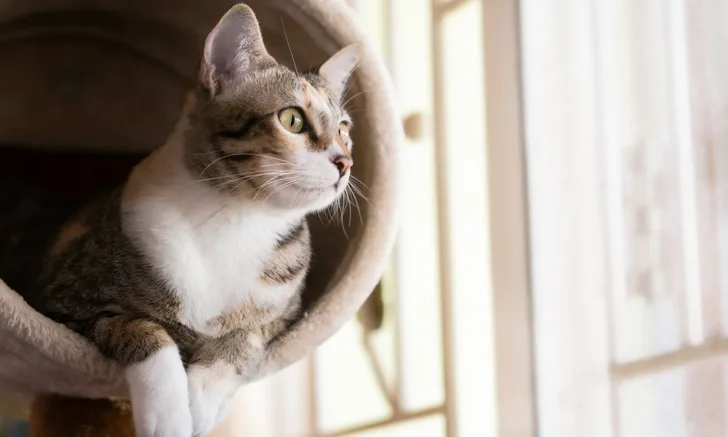Adoptability of Cats With Periuria
Meghan E. Herron, DVM, DACVB, Gigi’s, Canal Winchester, Ohio

In the Literature
Liu S, Sung W, Welsh S, Berger JM. A six-year retrospective study of outcomes of surrendered cats (Felis catus) with periuria in a no-kill shelter. J Vet Behav. 2021;42:75-80.
The Research …
Cats with periuria (ie, urinary elimination outside the litter box) are less likely to be adopted or are likely to be returned shortly after adoption; thus, shelters have historically either refused intake of and/or elected euthanasia for these cats without further intervention.
In this study, investigators surmised there would be no differences in outcomes or length of shelter stay between periuric and nonperiuric cats in the authors’ shelter population.
Outcome data of 294 cats with known periuria were collected over a 6-year period and included length of shelter stay, adoption and return rates, and euthanasia rates. Average length of stay over the study period differed significantly between periuric and nonperiuric cats (52.6 and 31.6 days, respectively); however, year-by-year analysis showed no significant differences for the latter 4 years of the study. Although cats with periuria had slightly higher return rates (23.1% vs 15.4%), <50% were returned specifically because of periuria.
Intervention strategies were implemented for cats with periuria. Each cat reported or observed to have elimination problems was medically evaluated and given a litter box preference trial, including box and substrate options. Cats were only available for adoption once they were reliably using a litter box for 5 consecutive days. The shelter offered full transparency regarding medical and behavioral histories, as well as education and follow-up opportunities. Results suggest that in the absence of physical disease, cats often develop periuria as a result of environmental influences. Furthermore, these cats may return to normal, desirable elimination patterns when placed in an alternate environment (likely one more catered to their behavioral needs and elimination preferences).
… The Takeaways
Key pearls to put into practice:
A history of inappropriate elimination does not deter most potential cat adopters; this is important to consider when making intake and euthanasia decisions.
Behavioral periuria has a high likelihood of resolution when the environment is changed to better suit the cat’s needs.
Establishing litter and litter box preferences at the beginning of a cat’s shelter stay and providing education and support for adopters may be key to successful adoption of cats with periuria.
You are reading 2-Minute Takeaways, a research summary resource presented by Clinician’s Brief. Clinician’s Brief does not conduct primary research.